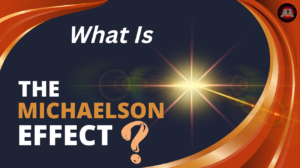DMT, or N,N-Dimethyltryptamine, is an indole alkaloid found in various plants and animals, well-known for its intense, short-lived psychedelic effects137. Increasing evidence suggests that DMT may also function as a neurotransmitter, playing important roles in the central nervous system and periphery.
Synthesis and Distribution
DMT is synthesized from the essential amino acid tryptophan. Tryptophan is decarboxylated into tryptamine, which is then transmethylated by indolethylamine-N-methyltransferase (INMT), resulting in the production of N-methyltryptamine (NMT) and DMT. INMT is found throughout the body, with high concentrations in the lungs, thyroid, and adrenal gland, as well as in the spinal cord, brain (specifically the uncus, medulla, amygdala, and frontal cortex), and pineal gland.
Mechanism of Action
DMT can be administered through injection or smoking, which allows it to bypass first-pass metabolism in the liver2. This results in rapid onset (seconds to minutes) and short duration (15-60 minutes) of effects2. After administration, DMT induces an immersive state of consciousness marked by vivid visual imagery. Studies have shown that DMT significantly alters brain activity, especially in areas associated with high-level cognitive functions.
Potential Therapeutic Uses
DMT may have therapeutic potential for treating anxiety and psychosis, and as a tool for exploring brain function1. Research suggests that DMT may reduce depressive symptoms by inducing peak experiences.
Adverse Effects
DMT has limited neurotoxicity and adverse effects, except for significant cardiovascular effects when administered intravenously in large doses.
DMT, or N,N-Dimethyltryptamine, is an indole alkaloid found in various plants and animals, known for its psychedelic effects and potential role as a neurotransmitter.

DMT as a Neurotransmitter:
- Signaling Function: DMT may exert a signaling function in regions of the central nervous system (CNS) involved in sensory perception.
- Synthesis and Storage: To act as a neurotransmitter, DMT needs to be synthesized, stored, and released. DMT can pass through several barriers in the brain, suggesting it may have a biological role beyond psychedelic effects.
- Potential Roles: DMT may have an anxiolytic role and be important in psychiatric disorders.
- Neuroplasticity: DMT can activate intracellular 5-HT2A receptors, potentially explaining the lack of tolerance with repeated use and categorizing it as a psychopastogen that can rapidly change brain structure and function.
DMT as a Psychedelic Substance:
- Psychedelic Effects: DMT produces brief and intense psychedelic effects when ingested. It’s known for its potent visual effects.
- Receptor Agonism: DMT is considered a serotoninergic drug because it acts as an agonist at various serotoninergic receptors, especially the 5-HT2A receptors.
- Subjective Experience: High concentrations of DMT can cause sensory alterations. Users may experience vivid “projections” of mystical experiences involving euphoria and dynamic pseudohallucinations.
- Pharmacokinetics: DMT has a rapid onset, intense effects, and a relatively short duration of action. It also does not induce tolerance to its psychological effects, unlike other classic serotoninergic psychedelics.







